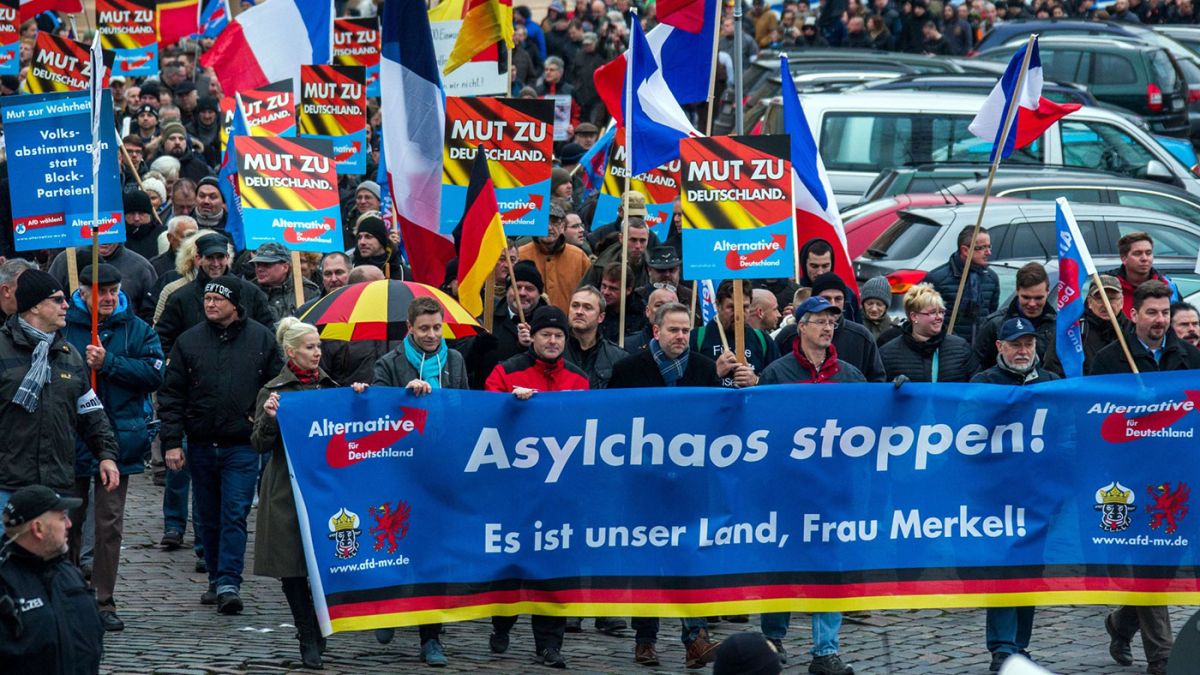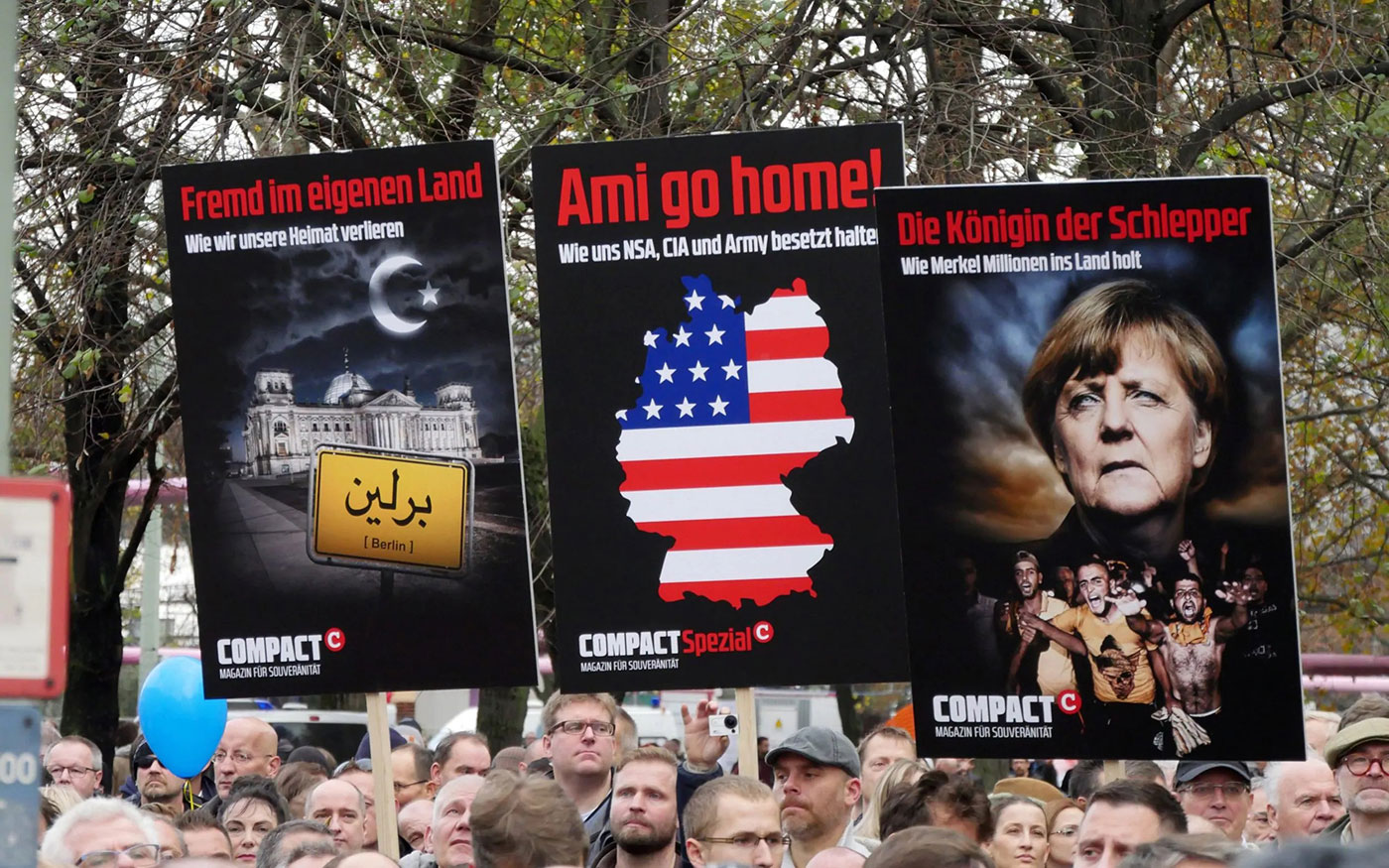MORE COVERAGE
Twitter Coverage
Satyaagrah
Written on
Satyaagrah
Written on
Satyaagrah
Written on
Satyaagrah
Written on
Satyaagrah
Written on
JOIN SATYAAGRAH SOCIAL MEDIA
On World Refugee Day, read how Germany, Sweden, and India bore the brunt of incoming refugees

In a world divided by nation-states, immigration remains one of the contentious and debated issues. Objections have been raised by governments of both developed and developing nations about the unchecked inflow of migrants due to employment, political instability, and religious persecution. While there is a growing consensus among nations to check illegal immigration, the case of refugees provides for a unique case.
According to the United Nations 1951 Refugee Convention, a refugee is defined as someone who left his home country due to “a well-founded fear of persecution because of his/her race, religion, nationality, membership in a particular social group, or political opinion.” On June 20 each year, United Nations commemorates the day as ‘World Refugee Day’. For 2021, the world body has channelised its focus on the ‘power of inclusion.’
In its own words, UN remarked, “The shared experience of COVID-19 has shown us that we only succeed if we stand together. We have all had to do our part to keep each other safe and despite the challenges, refugees and displaced people have stepped up. Given the chance, refugees will continue to contribute to a stronger, safer, and more vibrant world.” A closer look at the refugee crisis in Europe, United States and even India portrays a contrary picture than what the United Nations wants us to believe.
 |
The refugee crisis in Sweden
The refugee crisis in Europe began in 2014, with forced migration reaching its peak in 2015. According to the UNHCR, the majority of those arriving on European shores from the Meditteranean Sea were Iraqi (9.4%), Afghan (20.9%), and Syrian (46.7%). By November 2015, Sweden had received over 146,000 asylum seekers. And the result was imminent. In 2018, Daily Caller reported that a majority of rape accused (58%) between 2012-2017 were foreign-born.
Out of the foreign-born rapists, a whopping 40% came from Africa or the Middle East while those hailing from Afghanistan accounted for 5% of rapes and attempted rapes. In about 80% of cases where the victim did not know the accused, the perpetrator was found to be of foreign-origin. However, over fears of being ‘racist’, Sweden had reportedly banned the practice of describing criminals in the year 2016. While the Swedish authorities had been wary of being dubbed as ‘racist’, they did not do much to deport rapists. Daily Caller reported that only 1 out of 5 foreign-origin rapists and attempted rapists were extradited to their home country.
Between 2014 and 2016, multiple sexual harassment incidents surfaced during the ‘We Are Sthlm’, an annual youth festival. The Swedish police had to launch an internal investigation to probe allegations of ‘coverup’ of assaults perpetrated by migrant youths. The Spectator reported that violent crime had been soaring in Sweden. It stated, “It’s widely known that gang members are mainly first- and second-generation immigrants.” Several neighbourhoods had become ‘no-go zones’ for Swedish citizens without police protection.
In 2015, the Swedish Security Service was notified about 500 suspected migrants who were linked to terrorism charges and war crimes. Besides the menace of rising crime, refugees were also found to bring in MRSA infections in the Skane province in Sweden. At the same time, about 20-30% of refugees were found to have mental disorders. The country also reported an increase in tuberculosis cases after four health workers contracted it in an asylum centre. It was also found that 90% of those suffering from tuberculosis were born abroad.
Owing to an increase in the number of immigrants, a leaked internal memo showed that the Swedish government was mulling to cut down on all public services. Despite opening its arms to the refugees, the staff members at the Swedish Migration Agency complained about death threats and harassment by refugees applying for permanent residence in the country. The migrants would call the staff on their cell phones or stalk them on social media platforms.
How Germany exacerbated the refugee crisis?
At the height of the migrant crisis in Europe, German Chancellor Angela Merkel announced that the country had the ‘economic strength’ to take in refugees. She also claimed that there was no upper limit to the number of refugees that the country could take in. Angela Merkel had come under fierce criticism for not consulting the federal States. Seehofer, the leader of the Christian Social Union in Bavaria (CSU), had criticised the Chancellor and estimated that 30% of all refugees were from Syria. He had called upon the EU to cut funding to member States that reject mandatory refugee quotas.
A German study in 2018 found that the country’s fourth-most-populous state, Lower Saxony, witnessed an increase in violent crimes due to incoming migrants. Between 2007 and 2014, the region saw a 21.9% decline in such crimes. However, there was a 10.4% hike by 2016 end. It was found that Lower Saxony had about 7.5 lac residents without German citizenship. By 2016 end, only 1.5 lac migrants had applied for asylum. 92.1% of the total increase in crimes in Lower Saxony was attributed to the incoming migrants.
Bloomberg reported, “Between 2014 and 2016, the share of solved violent crimes attributed to asylum seekers increased to 13.3 percent from 4.3 percent — a disproportionately high share compared with the state’s foreign population… The breakdown of specific crimes committed by the asylum seekers is equally thought-provoking. In some 91 percent of murders and three-quarters of cases involving grave bodily damage, the victims are other migrants.”
The liberal, open-border policies of German Chancellor Angela Merkel had turned the country into the most sought after destination for refugees. Between January and December 2015, a whopping 1.091 million asylum-seekers registered with the German government for their distribution among federal States. However, in February 2016, the government conceded that it lost track of 13% of the asylum seekers. Reportedly, the migrants did not move to their accommodation and instead migrated to other European countries or kept living in the country illegally.
The result of left-liberal indoctrination was such that a German politician by the name of Selin Gören lied about the racial identity of the 3 perpetrators who raped her in 2016. The woman was caught off guard by the men at night in a playground and forced to perform sexual acts. She had concealed the fact that the accused spoke in Arabic /Farsi. She claimed that she did not want to stoke hatred against migrants in Germany. The policies of the German government to wholeheartedly welcome the refugees proved costly.
Rohingyas and the refugee crisis in India
The Rohingya refugee crisis is the largest refugee crisis in the world today, after the exodus of over a million Syrians into Europe in 2016. India has seen massive infiltration by Rohingya Muslims mostly from Rakhine in Myanmar. The government of India has maintained a tough stand against the infiltration. After the Citizenship Amendment Act was enacted by the Modi government, Home Minister Amit Shah had vociferously responded to Muslim leaders and said that Rohingya Muslims pose a security threat and would not be allowed to settle in India.
In July 2018, Economic Times reported little-known Rohingya terror group Aqa Mul Mujahideen or HaY (Harakah al-Yaqin is called Aqa Mul Mujahideen by the Myanmar government) blamed for the recent attacks on Myanmar border outposts by the country’s president not only maintains links with Hafiz Saeed’s Lashkar-e-Taiba (LeT) but is learnt to have developed ties with the Jaish-e-Mohammed (JeM) cell in Jammu and Kashmir.
Rohingyas had also massacred Hindus in the Rakhine State of Myanmar. In 2017, Myanmar Army issued a statement that a mass grave of 28 Hindus was discovered in the conflict-torn Rakhine state. The Myanmar Army had confirmed that they had found 20 dead women and eight men in the graves, including six boys under the age of ten. Not too long ago, it was reported that 1300 Rohingyas had fled to Bangladesh from India fearing deportation to Myanmar.
Rohingyas have also been regularly apprehended by local law enforcement. Union Ministers have also said that they pose a security threat to the country. In October 2019, Seven Rohingya Muslims who were lodged in jail since 2012 for illegally entering India were sent to Myanmar border for deportation. The government has also decided to deport 23 more Rohingyas, who have been staying at various detention camps in Assam after they were caught staying illegally in the state.
It is important to remember here that India is not a party to the 1951 Convention on Refugees and neither the 1967 Protocol. Therefore, no international convention is binding on India. Even if we take into account the international conventions, the Rohingyas are clearly bypassing a safe haven in the form of Bangladesh to reach India for the purpose of gaining material benefits. Thus it makes them economic migrants when they enter India and not persecuted minorities.
While the United Nations has been advocating the inclusion of refugees, the question remains whether the incoming migrants are willing to assimilate with the culture of the host nation. As the refugee crisis in Germany, Sweden and India shows, the surge in the number of refugees can lead to increase crime, demographic change and inconvenience for the natives.
 Support Us
Support Us
Satyagraha was born from the heart of our land, with an undying aim to unveil the true essence of Bharat. It seeks to illuminate the hidden tales of our valiant freedom fighters and the rich chronicles that haven't yet sung their complete melody in the mainstream.
While platforms like NDTV and 'The Wire' effortlessly garner funds under the banner of safeguarding democracy, we at Satyagraha walk a different path. Our strength and resonance come from you. In this journey to weave a stronger Bharat, every little contribution amplifies our voice. Let's come together, contribute as you can, and champion the true spirit of our nation.
 |  |  |
| ICICI Bank of Satyaagrah | Razorpay Bank of Satyaagrah | PayPal Bank of Satyaagrah - For International Payments |
If all above doesn't work, then try the LINK below:
Please share the article on other platforms
DISCLAIMER: The author is solely responsible for the views expressed in this article. The author carries the responsibility for citing and/or licensing of images utilized within the text. The website also frequently uses non-commercial images for representational purposes only in line with the article. We are not responsible for the authenticity of such images. If some images have a copyright issue, we request the person/entity to contact us at satyaagrahindia@gmail.com and we will take the necessary actions to resolve the issue.
Related Articles
- Twitter rewards an Islamist org, set to be banned by India, with a verified blue tick: Here is what PFI has done in the past
- The ‘Sanghi propaganda’ trope on abduction and conversion of Sikh girls to Islam. Here is how this online tirade is an omen of impending danger
- Supreme Court dismisses plea seeking protection of Hindus from the Muslim community in Mewat
- Srinagar: Top LeT commander, 1 Pakistani terrorist killed in encounter, AK-47s recovered
- Massive endorsement of anti-Grooming Jihad laws: Here are the takeaways from the Kashmir controversy and how Khalistanis swallowed a bitter pill
- Bengal: Calcutta HC Asks NHRC To Examine Pleas Of People Displaced By Post-Poll Violence; Warns State Government Against Obstruction
- Land Jihad being carried out by Waqf Board much more dangerous than Love Jihad; Hindus need to fight this
- ‘State in denial, admin lied about no complaints being filed, prima facie evidence of violence’: Everything Calcutta HC said on Bengal post-poll violence
- Bengal: The Chilling Accounts Of Families Of Two BJP Workers Who Can Return Home Only If The Women Are ‘Given Up’ To Trinamool Gangsters
- UP mass conversion: How Darsh Saxena, Rajeshwari and Priyanka became Mohd Rehaan Ansari, Razia and Fatima, more details emerge
- Tragedy or Drama: Mufti Mohammad Sayeed's daughter Rubaiya abduction led to free five most notorious terrorists
- Ex-radicalised Muslim author studies mosques in UK, reveals Taliban, ISIS-like lifestyle of the ultra-orthodox community
- Soft-conditioning of Hindu minds to normalize grooming jihad in Bengali TV serial ‘Khorkuto’
- Google removes ‘Ghazwa e Hind’ app from play store after uproar
- Special 26: Here are the verses in the Quran that Waseem Rizvi wants to delete

























